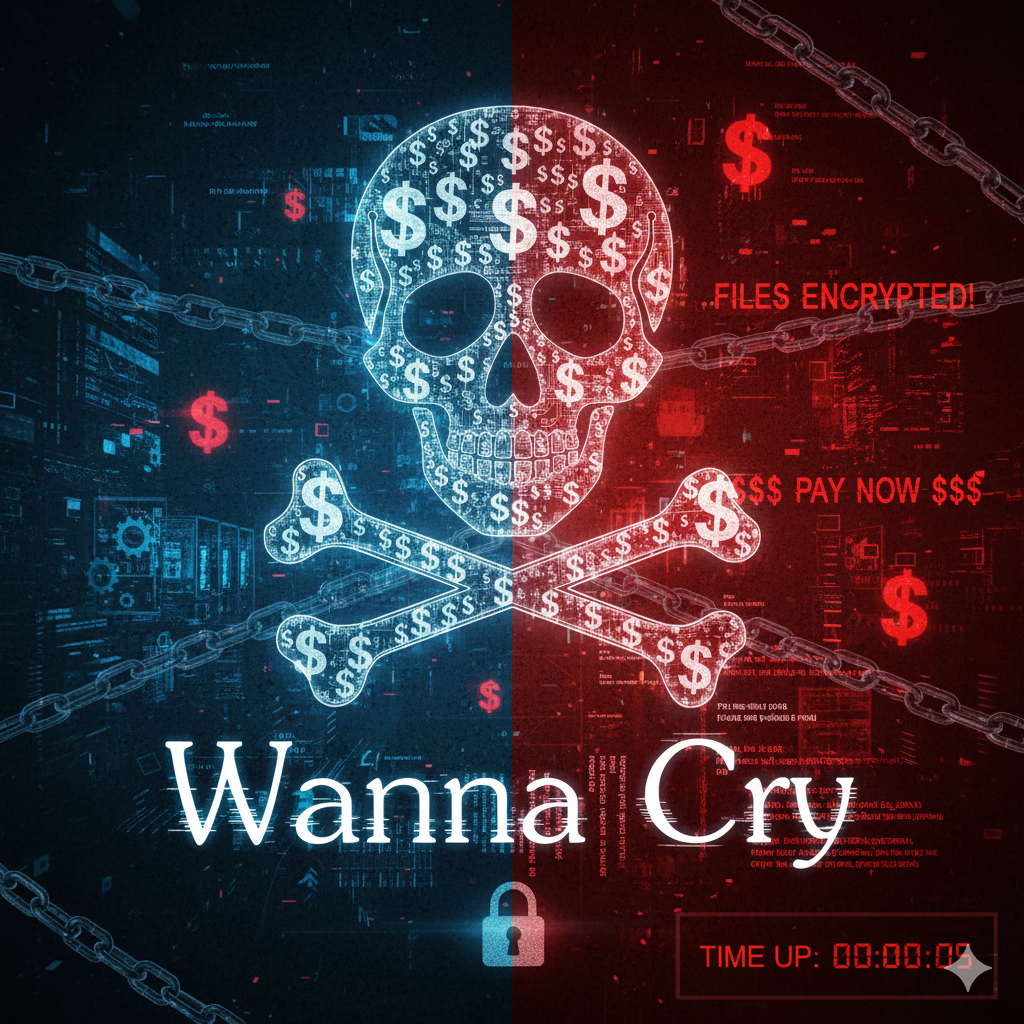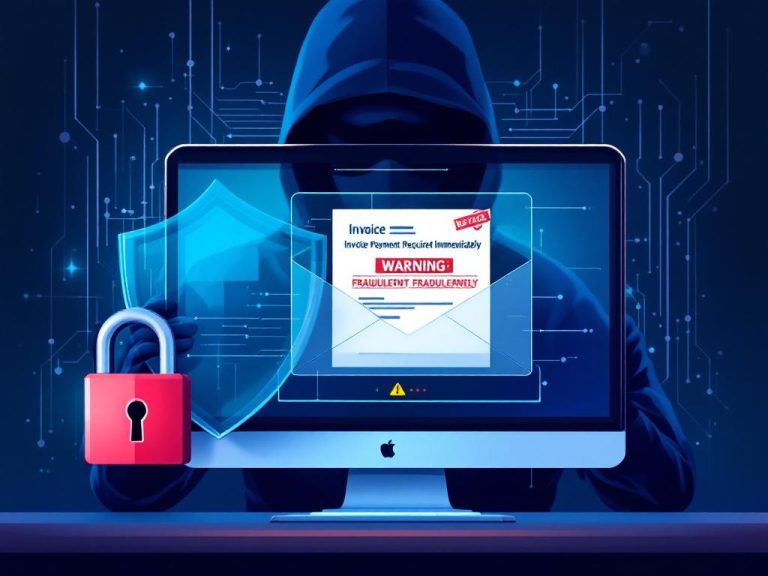In the digital age, we often imagine hackers as shadowy figures working quietly in the background, targeting one company or stealing a few credit card numbers at a time. But in May 2017, the world witnessed something very different – a cyberattack that spread like wildfire, crossing borders faster than any human pandemic ever could.
Within hours, hospitals in the UK were cancelling operations, factories in Europe shut down production lines, telecom providers in Spain struggled to stay online, and government institutions from Russia to China reported massive outages. Screens everywhere lit up with the same chilling message: “Oops, your files have been encrypted.”
The attack, later known as WannaCry, wasn’t just another computer virus. It was a global crisis that exposed how vulnerable our digital infrastructure really is – and how quickly chaos can unfold when millions of machines are connected but unprotected.
What made WannaCry truly terrifying was its speed. Unlike most cyberattacks that require someone to click on a malicious link or open a dangerous attachment, this ransomware spread on its own, leaping from one vulnerable computer to the next. By the time IT teams realized what was happening, the infection had already swept across entire networks, locking up critical data and demanding ransom payments in Bitcoin.
How could one virus do so much damage, so fast? And why were so many organizations – from small businesses to national healthcare systems – caught completely off guard? To answer that, we need to look at the hidden ingredients that made WannaCry one of the most infamous hacks in history.
What was WannaCry?
At its core, WannaCry was a piece of ransomware – but not just any ransomware. Ransomware is a type of malicious software designed to take control of a computer by encrypting its files, making them completely inaccessible to the user. Once the files are locked, victims receive a message demanding a ransom payment in exchange for the decryption key.
WannaCry followed this classic formula, but with a more polished – and more frightening – approach. After infection, the victim’s screen would suddenly display a red-and-black message box with the words:
“Oops, your files have been encrypted!”
The message wasn’t just a warning; it was a digital ransom note. Victims were told that if they wanted to see their data again – whether family photos, business documents, or entire hospital databases – they would need to pay a fee in Bitcoin, the cryptocurrency often favored by criminals for its relative anonymity.
The initial ransom demand was about $300 worth of Bitcoin, but the malware added psychological pressure with a built-in countdown timer. Victims had only a few days to make the payment. If the deadline passed, the ransom would double to $600, and after a week the attackers threatened to delete the files forever.
This combination of encryption, fear tactics, and urgency created a sense of panic. For individuals, it meant possibly losing personal memories or critical work. For organizations, it meant paralyzed systems, halted operations, and financial losses mounting by the minute.
But what truly made WannaCry different from earlier ransomware attacks was not just its ransom note or payment method – it was its ability to spread automatically, turning a typical cybercrime scheme into a global digital epidemic.
The Key to its Speed: EternalBlue
What turned WannaCry from “just another ransomware” into a global catastrophe was not only its ransom scheme, but the weapon it used to spread: a powerful exploit called EternalBlue.
EternalBlue targeted a flaw in Microsoft’s Server Message Block (SMB) protocol – a core Windows feature that allows computers to share files and printers across networks. Under normal circumstances, SMB is essential for office environments, letting hundreds of machines connect and exchange information. But in this case, a hidden vulnerability made SMB the perfect gateway for attackers.
Here’s where the story gets even more alarming: EternalBlue wasn’t invented by cybercriminals at all. It was originally developed by the U.S. National Security Agency (NSA) as part of a secret stockpile of cyber weapons. These tools were designed for offensive operations, giving intelligence agencies the ability to penetrate foreign networks. But in 2017, hackers known as the Shadow Brokers leaked a collection of these NSA tools to the public. Among them was EternalBlue – soon to become the fuel for WannaCry’s global firestorm.
Why was EternalBlue so dangerous?
-
No user interaction required – Unlike most malware that needs someone to click a link or open an attachment, EternalBlue allowed WannaCry to break in silently.
-
Automatic propagation – Once a single vulnerable computer was infected, WannaCry could scan for other machines on the same network and spread instantly, without human help.
-
Lateral movement – Inside corporate networks, it jumped from one workstation to another, infecting entire organizations in minutes.
-
Worm-like behavior – This turned WannaCry into more than just ransomware. It became a self-spreading worm, able to replicate itself endlessly as long as it found unpatched systems.
The result was explosive speed. A hospital network, for example, didn’t just lose one PC – it could see hundreds of machines locked simultaneously, crippling everything from patient records to diagnostic equipment. Factories, shipping companies, and telecom providers faced the same nightmare: once WannaCry entered the front door, it swept through the building like a digital hurricane.
In other words, EternalBlue gave WannaCry the power to scale like a pandemic – a cyber virus capable of circling the world in just a few hours.
Why So Many Computers Were Vulnerable
Here’s the most shocking part of the WannaCry story: the vulnerability that made the attack possible had already been fixed by Microsoft before the outbreak began. In March 2017 – two months prior to the ransomware wave – Microsoft released a security patch (MS17-010) that closed the hole exploited by EternalBlue.
So why did WannaCry spread so successfully? The problem wasn’t the absence of a fix, but the fact that millions of organizations had failed to apply it.
There were several reasons for this widespread negligence:
-
Outdated Windows systems
-
Many organizations, especially in healthcare, government, and manufacturing, were still running Windows XP or other unsupported versions of Windows.
-
These older systems no longer received regular security updates, leaving them permanently exposed.
-
-
“Too critical to touch” mentality
-
Hospitals, transport companies, and factories often depend on legacy software tied to expensive machines or medical devices.
-
IT staff were hesitant to reboot or update these systems, fearing downtime could disrupt life-saving operations or essential services. Ironically, this very caution created even greater risk.
-
-
Slow or weak patch management
-
Even when updates existed, many companies had inefficient patching processes.
-
Some lacked centralized IT management, leaving individual departments responsible for updates. Others postponed patches until “maintenance windows” – which could be months apart.
-
-
Underestimation of the threat
-
For many IT teams, the vulnerability sounded technical and abstract.
-
Without clear evidence of active exploitation, some administrators simply did not prioritize the patch, assuming the risk was low.
-
Together, these factors created a perfect storm: millions of unprotected machines were connected to the internet, waiting to be exploited. When WannaCry appeared, it found fertile ground and spread with almost no resistance.
The Impact
The results were catastrophic and made global headlines within hours.
-
UK’s National Health Service (NHS): Hospitals and clinics across England and Scotland had to cancel thousands of appointments and surgeries. Doctors could not access patient records; ambulances were diverted; even basic medical operations ground to a halt.
-
FedEx: The shipping giant reported major disruptions to its global operations, impacting deliveries and logistics worldwide.
-
Renault: The French car manufacturer temporarily stopped production at several factories to contain the infection.
-
Telefonica: One of Spain’s largest telecom companies instructed thousands of employees to shut down their computers to prevent further spread.
-
Critical infrastructure: Reports surfaced of government agencies, railway systems, and energy providers in countries like Russia, India, and China being temporarily forced offline.
The attack didn’t just cost money – it put lives and national economies at risk. Patients missed medical treatments, companies lost millions in halted production, and IT teams around the world worked around the clock to contain the chaos.
In the aftermath, estimates of the financial damage ranged from $4 to $8 billion globally – all because organizations had failed to install a patch that was already available.
How the Attack Was Stopped
After hours of chaos, with hospitals shutting down and companies worldwide fighting fires, the WannaCry outbreak suddenly began to slow. It wasn’t government intervention or a tech giant’s emergency patch that caused this — but the sharp eyes of a young independent security researcher working from his laptop at home.
That researcher, later identified as Marcus Hutchins (also known online as MalwareTech), stumbled upon what would be called the “kill switch.” While analyzing the ransomware’s code, he noticed that every time WannaCry infected a computer, it attempted to connect to a strange, unregistered domain name — a long string of nonsense characters ending in .com.
Out of curiosity, Hutchins decided to register the domain for about $10, not realizing at first what impact this would have. To his surprise, that simple act dramatically slowed the spread of the virus worldwide.
Why did this work?
-
The domain acted as a kind of check-in beacon for the ransomware.
-
If the domain was unreachable, WannaCry continued encrypting files and spreading.
-
But if the domain responded, the malware assumed it was running in a security sandbox (a test environment) and shut itself down.
By registering the domain and making it live, Hutchins had effectively tricked WannaCry into stopping itself. In one stroke, he had bought the world precious time.
However, this didn’t mean the threat was gone. Several points remained critical:
-
Infected systems stayed encrypted — registering the kill switch didn’t unlock any files; victims still had to deal with the ransom or restore from backups.
-
Variants without the kill switch quickly appeared, as cybercriminals modified the code to remove this weakness.
-
Unpatched systems remained vulnerable, meaning a second wave was always possible.
Still, the accidental discovery was hailed as a turning point. It slowed down the outbreak long enough for organizations to apply patches, disconnect infected machines, and prepare defenses. Without that stroke of luck, WannaCry might have caused far greater damage — potentially crippling hospitals, factories, and governments for weeks.
Lessons Learned
The WannaCry incident wasn’t just a temporary disruption — it became a historic wake-up call for the entire cybersecurity community. In a matter of hours, the attack revealed just how fragile the digital backbone of our world can be. The lessons it left behind are still highly relevant today:
1. Patch Management is Critical
-
Microsoft had already released the patch (MS17-010) two months before the outbreak, yet countless organizations failed to install it in time.
-
This showed that having patches available is not enough — what matters is how quickly and consistently they are applied.
-
For businesses, that means establishing automated patch management systems, testing updates rapidly, and enforcing strict timelines for critical fixes.
-
For individuals, it’s a reminder to never ignore Windows Updates or software prompts — delays can be the difference between safety and disaster.
👉 Lesson: Updates aren’t optional “later tasks” — they are frontline defenses.
2. Legacy Systems are High-Risk
-
Many of the worst-hit organizations were still running Windows XP or Windows 7, long past their official support period.
-
Healthcare systems, industrial plants, and government agencies often depend on outdated machines connected to vital equipment, but these older systems are prime targets for hackers.
-
The attack forced governments and companies to rethink their reliance on legacy infrastructure. Some organizations even paid millions afterward to upgrade to supported platforms.
👉 Lesson: Old systems = open doors. If replacement isn’t possible, they must be isolated and monitored.
3. Cyber Weapons Can Escape Control
-
EternalBlue was never meant to be in criminal hands. It was a tool created by the NSA, leaked by a hacking group called the Shadow Brokers.
-
Once released into the wild, it became a weapon anyone could use — from lone hackers to organized crime groups.
-
This raised ethical and political questions: Should intelligence agencies keep “zero-day exploits” secret for their own use, or disclose them to software companies to protect the public?
👉 Lesson: When powerful exploits leak, the whole world pays the price.
4. Prevention is Cheaper than Damage Control
-
WannaCry caused $4–8 billion in damages worldwide — costs that could have been avoided by simply applying a free security patch.
-
Companies lost not only money, but also customer trust, operational continuity, and in some cases even human lives were put at risk due to medical delays.
-
The contrast is striking: a 15-minute system update versus billions in global economic impact.
👉 Lesson: Proactive defense always costs less than reactive recovery.
5. Cybersecurity is Everyone’s Responsibility
-
WannaCry showed that a single weak point can have global ripple effects.
-
Hospitals in the UK, car factories in France, shipping companies in the U.S. — all fell victim, proving that cybersecurity is no longer just an IT problem.
-
Executives, employees, and even home users all have a role: staying aware, following safe practices, and treating digital hygiene like physical hygiene.
👉 Lesson: Security is not just about firewalls — it’s about culture, habits, and awareness.
The Big Picture
Ultimately, WannaCry demonstrated that in today’s hyperconnected world, a single vulnerability can trigger a global crisis. The attack may be years in the past, but the principles remain timeless:
-
Keep systems updated.
-
Retire or isolate legacy software.
-
Treat cybersecurity as a strategic priority, not an afterthought.
Because if WannaCry taught us anything, it’s that the next digital epidemic could spread even faster — and the cost of unpreparedness will be even higher.
WannaCry hit so many companies because they were still running outdated systems like Windows XP and Windows 7, had missed critical security patches, and continued using legacy software such as Internet Explorer. Many machines lacked up-to-date antivirus protection, and poor network segmentation allowed the ransomware to spread rapidly inside corporate networks. In short: a mix of obsolete IT, weak patch management, and poor cyber hygiene opened the door for WannaCry.
Conclusion: How WannaCry ransomware spread so fast in 2017
The WannaCry ransomware attack was more than just a headline in 2017 — it was a global wake-up call. It showed how a single vulnerability, once weaponized, can cripple hospitals, factories, and governments in a matter of hours. The answer to the question “How WannaCry ransomware spread worldwide in hours” lies in the deadly combination of outdated systems, ignored updates, and a leaked cyber weapon never meant to be in criminal hands.
The good news is that the lessons are clear. Timely patching, phasing out legacy systems, and treating cybersecurity as a shared responsibility can prevent the next WannaCry-scale crisis. The bad news? Cybercriminals have only grown more sophisticated since then.
The world can’t afford to forget what happened in May 2017. Because the next digital epidemic may spread even faster — and this time, we might not get as lucky with a hidden kill switch.
I also recommend you to read the following articles
Cyberattack Emergency Plan – What to Do When It Happens
Cybersecurity 2025: The Biggest Risks for Businesses – and How to Protect Your Company
Exposing phishing emails: How to recognize fraud attempts – safely and systematically
Follow me on Facebook or Tumblr to stay up to date.
Connect with me on LinkedIn
Take a look at my services
And for even more valuable tips, sign up for my newsletter





